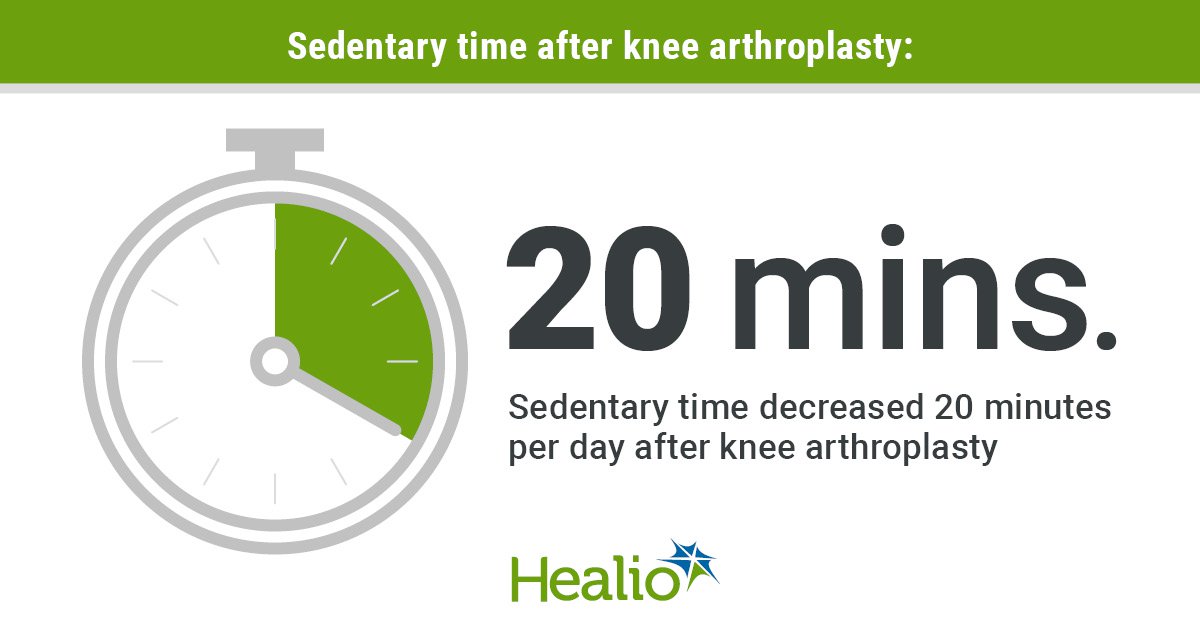Goal attainment scaling may improve physical activity after TKA
Setting individualized activity objectives through goal attainment scaling rehabilitation allowed for a small increase in physical activity levels after knee arthroplasty in patients younger than 65 years, according to published results.
Comparing standard rehabilitation with goal attainment scaling-based rehabilitation after both total and unicompartmental knee arthroplasty, the researchers obtained data for 97 patients (mean age of 58 years ±4.8).
Researchers equipped patients with 3D accelerometers for 1 consecutive week and classified their results as either sedentary, standing or active. After which, researchers saw an “increase in [physical activity] PA of 9 minutes (±37) per day (P = .01) and significant decrease in sedentary time of 20 minutes (±79) per day (P = .02),” the researchers wrote in the abstract.

Even with this small and significant increase in overall PA after knee arthroplasty, researchers found no significant difference in standing time, changes in PA between the control and intervention groups, and between the total and unicompartmental knee arthroplasty groups. Researchers concluded that “enhanced multidisciplinary perioperative strategies are needed to further improve PA after [knee arthroplasty] KA.” – by Max R. Wursta
Disclosures: The authors report no relevant financial disclosures.
